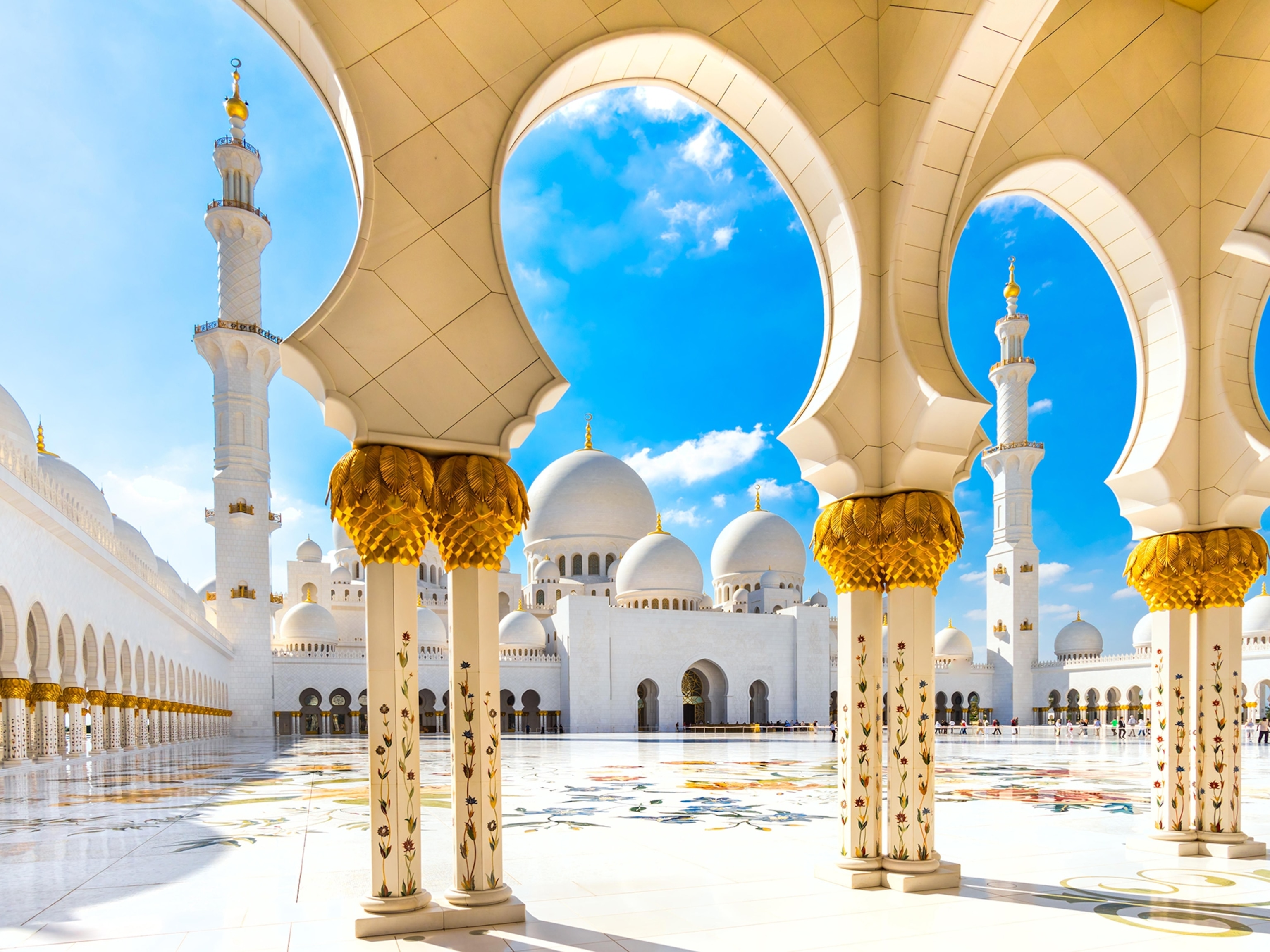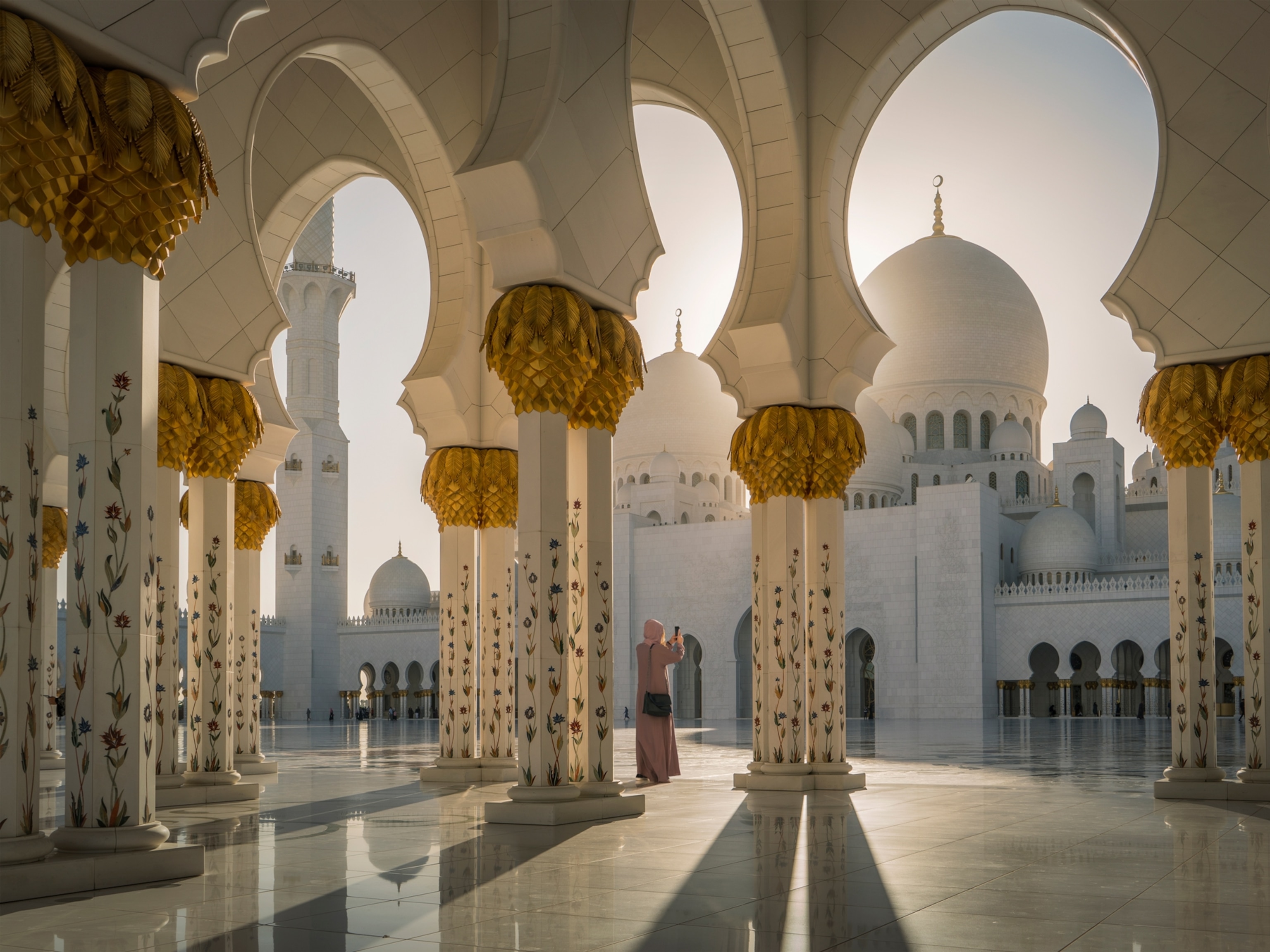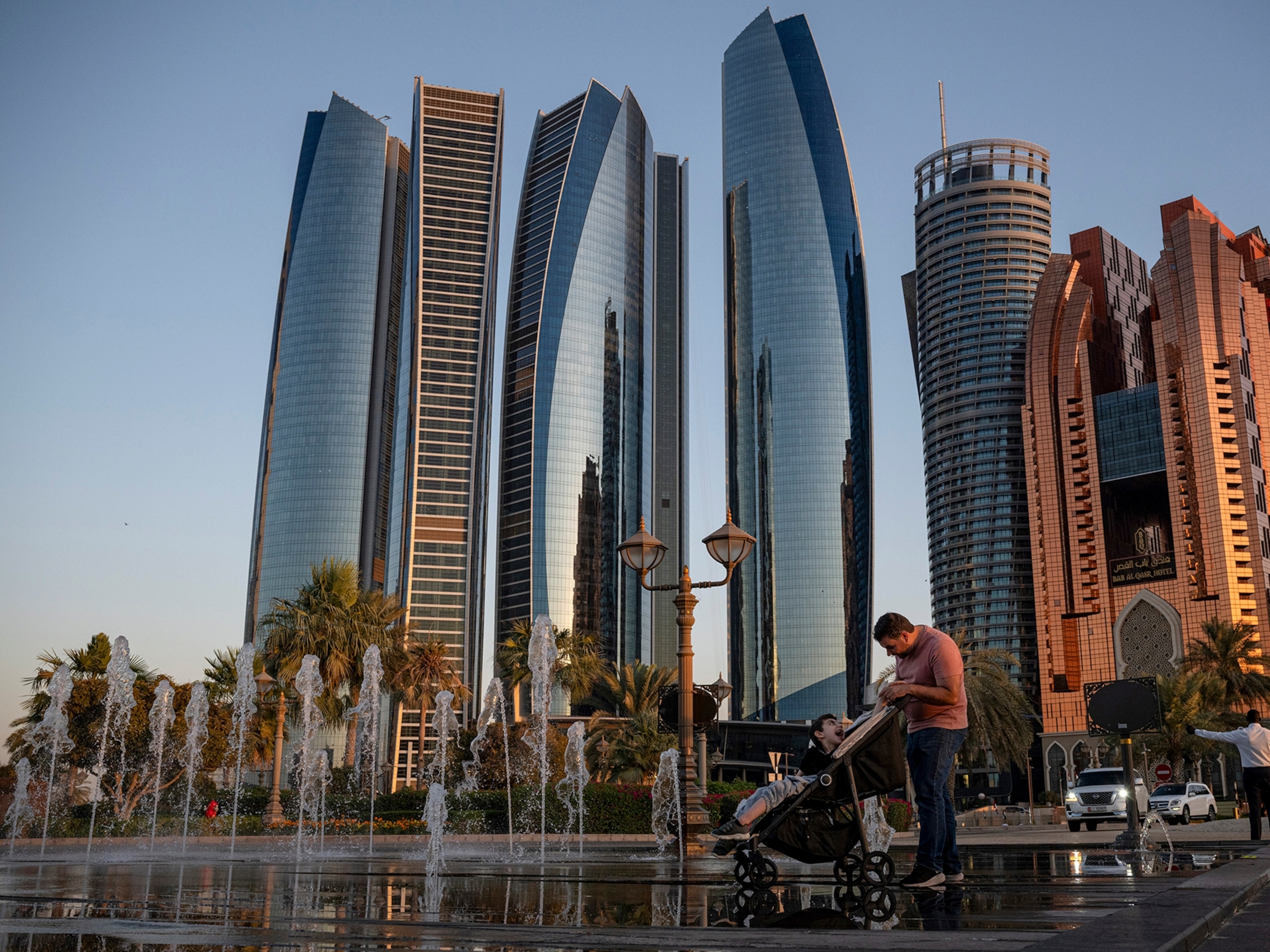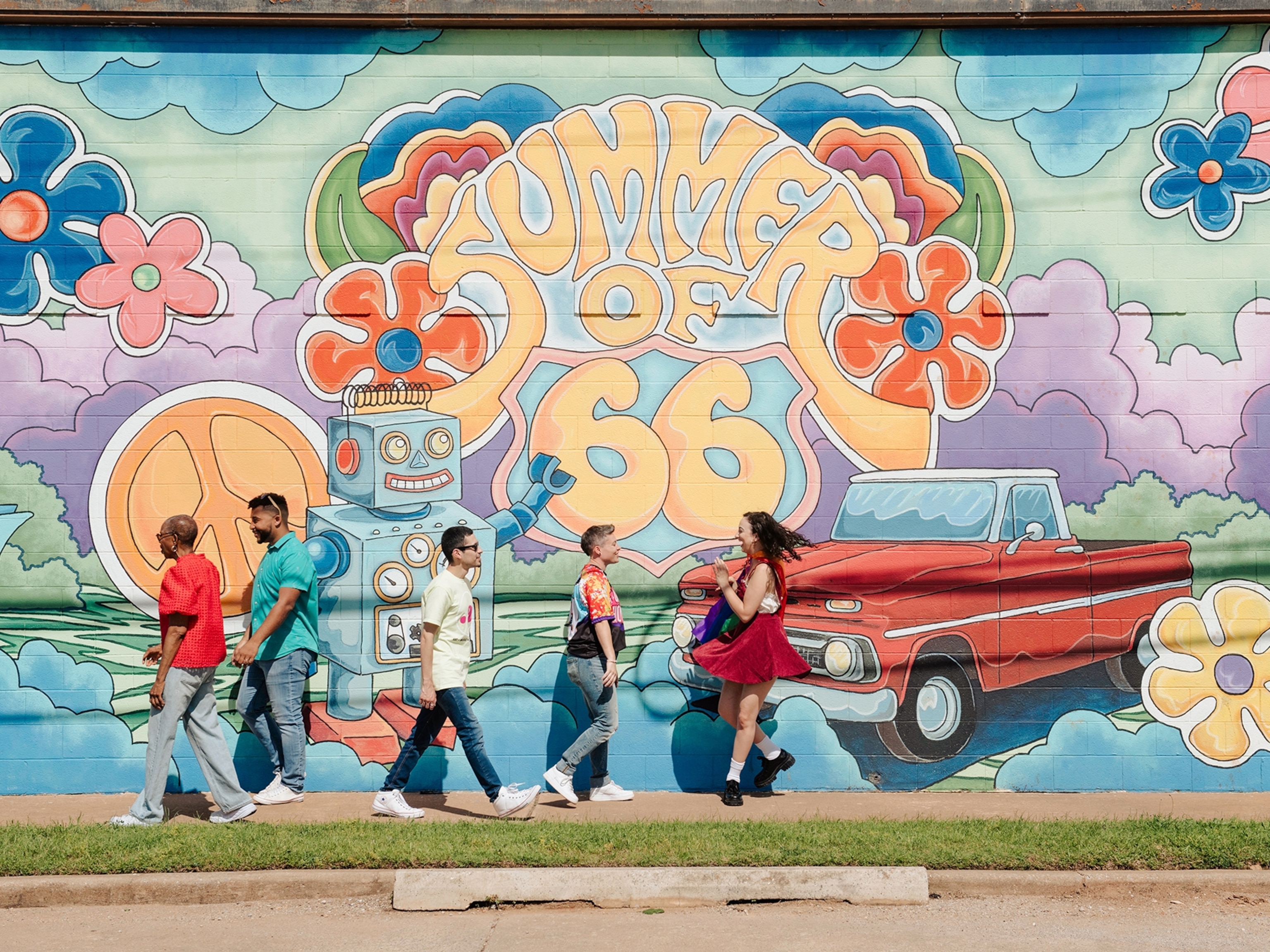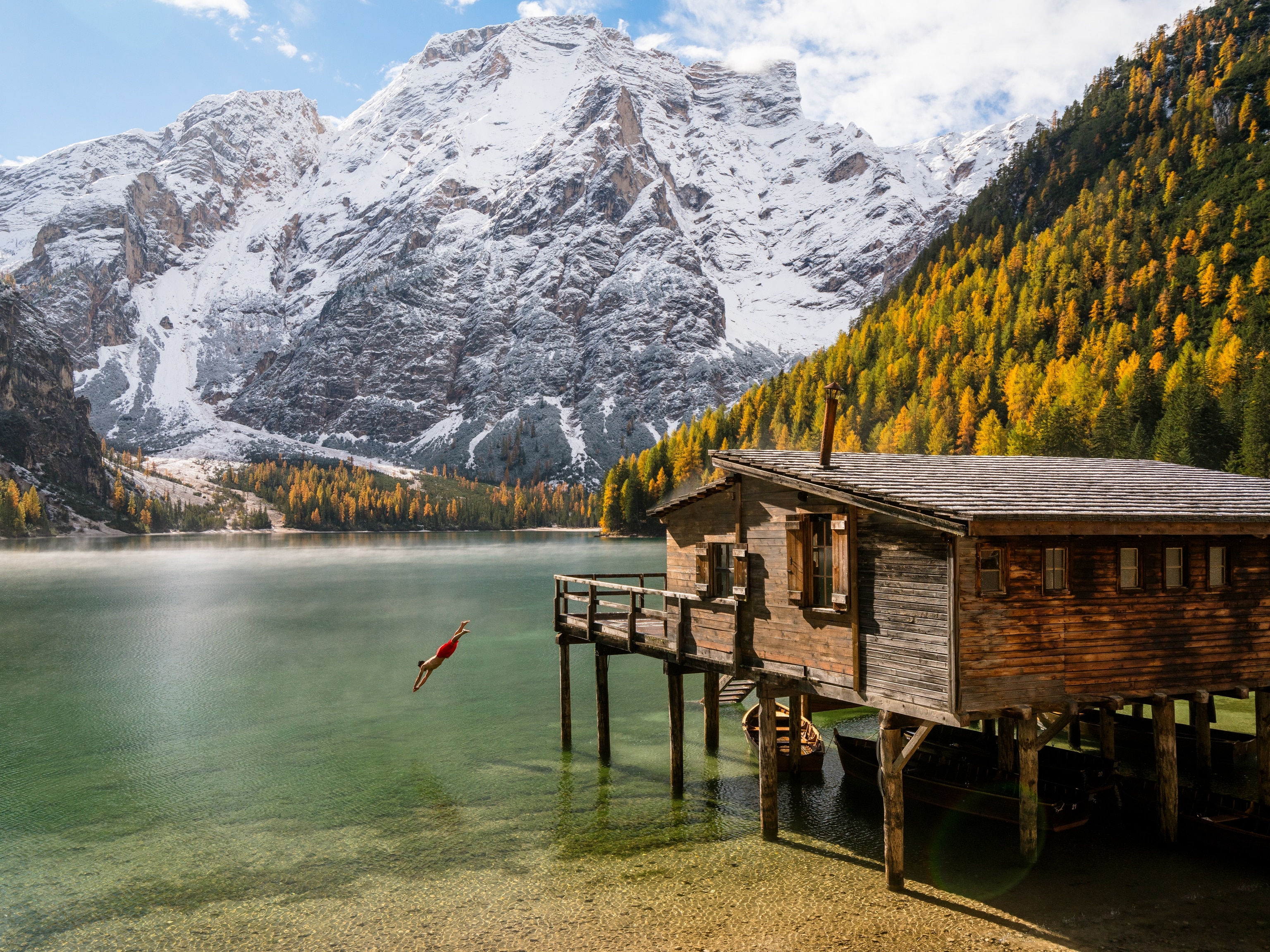
Know Before You Go: Abu Dhabi City Guide
Experience traditional culture and heritage alongside cutting-edge architecture and modern art in Abu Dhabi.
Abu Dhabi, the capital of the United Arab Emirates, is having its moment. A decade in the making, the long-awaited Louvre Abu Dhabi opened in November 2017 with over 500 artworks on display in its permanent galleries and launched its first special exhibition “From One Louvre to Another” with a jaw-dropping exhibition of 150 masterpieces from Musée du Louvre and the Palace of Versailles.
“From One Louvre to Another” features paintings, sculptures, ceramics, and furniture tell the history of France’s—if not the world’s—greatest art museum, starting in its earliest days in the 17th and 18th centuries. The awe-inspiring show is the first of many to come that, combined with Jean Nouvel’s audacious architecture, should draw art lovers from around the world.
Before you devote a day to absorbing the collection on display in the museum’s 55 distinct buildings—intended to resemble an ancient Arabian medina—explore Abu Dhabi’s traditional culture, rich in oral storytelling, poetry, crafts, music, and dance. Rooted in its Bedouin heritage, the city will give you an appreciation of how far this former Arabian Peninsula pearling and fishing village has come.


Pack
Save the bathing suit and shorts for the beach. Despite the balmy weather and welcoming locals, long versed in the ancient art of Arab hospitality, Abu Dhabi remains deeply conservative. Dress modestly out of respect if you’re keen on meeting locals. Cover your upper arms and décolletage, and wear skirts to the knee or trousers. The local women wear stilettos, but you’ll need flat comfy shoes for the Louvre.
Sleep
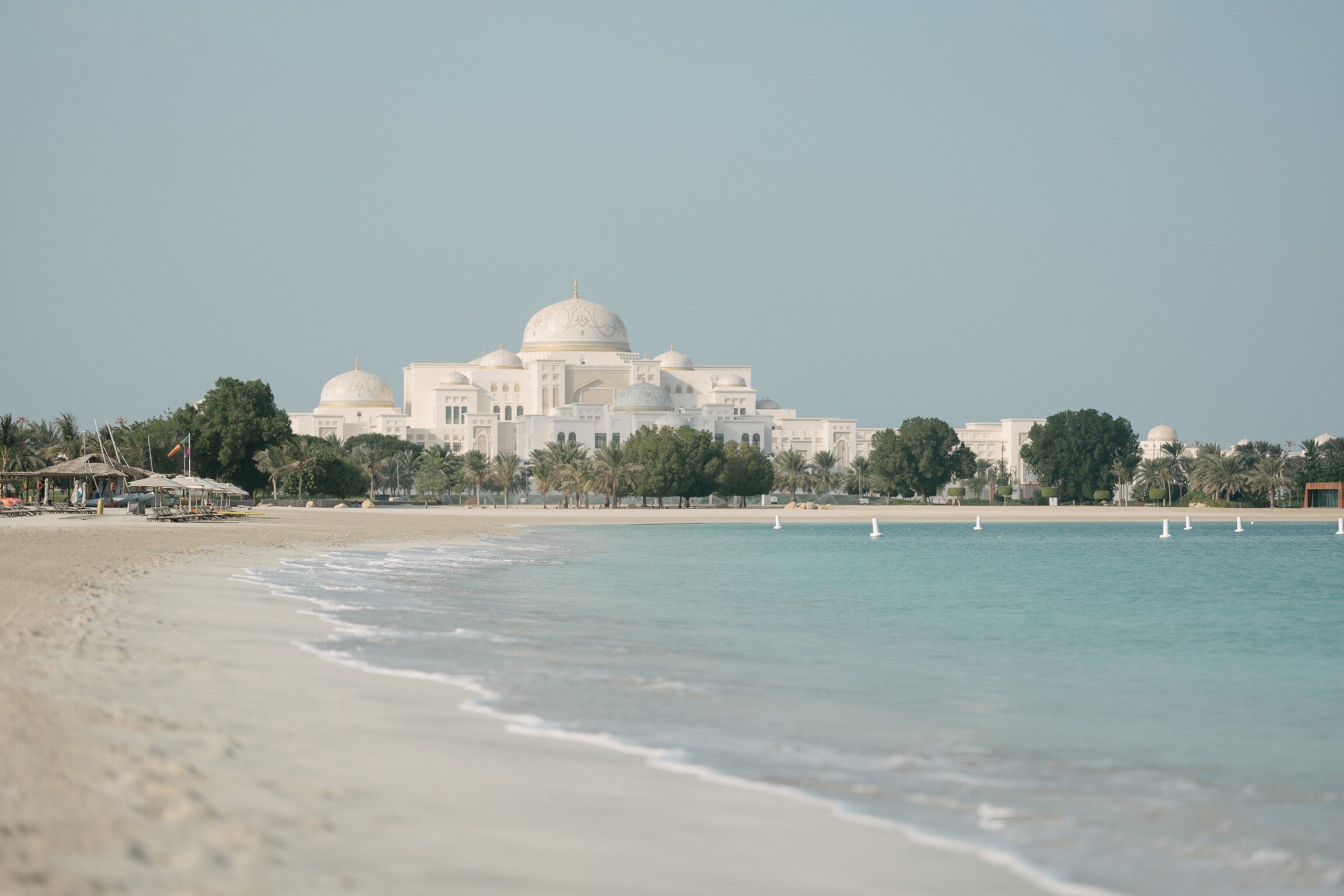
Monumental Emirates Palace may be gaudy, but it’s also glamorous—many guests arrive by luxury cruisers and seaplanes. Originally intended to serve as lodgings for state guests (from princes to presidents), the enormous hotel has 394 rooms and suites with marble bathrooms, butlers, and balconies overlooking the sprawling palm-shaded gardens. There are also a dozen restaurants and bars, a sumptuous spa with a Moroccan hammam, and an ATM that dispenses gold bullion. The elegant Shangri-La Qaryat al Beri speaks to the splendid medieval architecture of the Arabian Peninsula, with graceful arches and moucharaby oriel windows with carved latticework. Wooden abras (small boats) ferry guests along waterways to a shopping arcade modeled on a traditional souk (market) while everywhere there are views across the water to the bulbous domes and slender minarets of the Sheikh Zayed Grand Mosque.
Explore
Before you visit the sleek, futuristic Louvre Abu Dhabi, see the historic sights. Qasr al Hosn is a handsome fort dating to the 1760s. Abu Dhabi’s oldest building started life as a sea watchtower before becoming the home of the ruling Al Nahyan family. An exhibition of archival images and oral stories reveals the city’s extraordinary transformation. At charming Emirates Heritage Village, popular with locals and visitors alike, observe traditional weaving, pottery, and metalwork, and buy handicrafts and spices from stalls in goat-hair tents. Board a wooden dhow (traditional boat) for a cruise through the mangroves to learn about the emirate’s pearling history on the Abu Dhabi Pearl Journey. Recline on cushions as you sip Arabic coffee and nibble on dates, all while the crew sings traditional Emirati seafaring songs. Save the immense Sheikh Zayed Grand Mosque for sunset (there’s a 4:45 p.m. tour) to gawk at its 82 gleaming domes, more than a thousand columns, and chandeliers gilded in 24-karat gold.

Eat
A decade ago, private homes provided the only opportunity to taste Emirati food, which is different from the ubiquitous food of the Levant (including Lebanon, Syria, and Jordan) served at Arabic restaurants. Opulent Mezlai was Abu Dhabi’s first Emirati fine dining restaurant. Here you can feast on refined dishes, fragrant with wild za’atar (a regional herb) and tinted with saffron, such as grilled hammour (a local fish). Alternatively, try balaleet (traditional noodles infused with saffron and cardamom, topped with a thin omelet) at Meylas, a food truck run by local woman Shaikha Al Kaabi who serves home-cooked favorites made with family recipes.
Shop
Designed by acclaimed architects Foster and Partners, the World Trade Center Souk is a chic shopping mall modeled after an old Arabian market. Fusing contemporary style with Islamic architecture (think octagonal forms, zellij tilework, and wooden moucharaby screens) it’s a beautiful place to shop for everything from designer fashion to quintessential souvenirs, such as bronze coffeepots, Persian carpets, and Arabic perfumes.
Lara Dunston, travel writer based in Cambodia, lived in the UAE for 7.5 years, writing the first guidebooks to Abu Dhabi and Dubai for Dorling Kindersley and Lonely Planet. You can see more of her work on her website.
